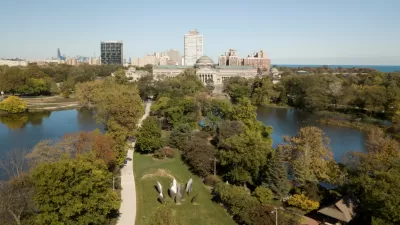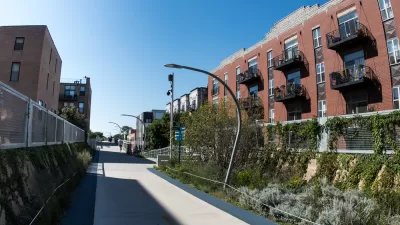Is Whole Foods making Thanksgiving accessible for residents of Englewood in Chicago?
"When Whole Foods opened its Englewood location on West 63rd Street in late September, the natural and organic food retailer identified about 30 staple items that would be sold at much lower prices than at other Whole Foods stores," reports Kori Rumore, Jonathan Berlin, and Phil Geib for the Chicago Tribune.
The store made news as far back as its opening announcement in November 2014. The store is usually a sign of the gentrification ship long having sailed, but in Englewood's case in 2014, any influx of affluence was still speculative and a few years, at least, on the horizon.
Now the Chicago Tribune checks in with the store to see if the company's promises of selling food at less than usual Whole Foods prices are holding true during the Thanksgiving season.
Now almost two months after the 18,000-square-foot store opened, how much can an area resident expect to spend on foods for a traditional Thanksgiving dinner? Is it equal to what someone in suburban Evanston - the closest store location to high-earning enclaves Kenilworth, Glencoe and Winnetka - might pay? How does it compare with the national average?
To complete the study, the investigative team checked the lowest-priced Thanksgiving foods according to the American Farm Bureau Federation's annual informal price survey, comparing the prices at the Englewood store to the Evanston store on Green Bay Road. The findings: the total rang in at $44.60 in Englewood, compared to $74.09 in Evanston.
FULL STORY: Thanksgiving prices at Englewood Whole Foods

Alabama: Trump Terminates Settlements for Black Communities Harmed By Raw Sewage
Trump deemed the landmark civil rights agreement “illegal DEI and environmental justice policy.”

Planetizen Federal Action Tracker
A weekly monitor of how Trump’s orders and actions are impacting planners and planning in America.

The 120 Year Old Tiny Home Villages That Sheltered San Francisco’s Earthquake Refugees
More than a century ago, San Francisco mobilized to house thousands of residents displaced by the 1906 earthquake. Could their strategy offer a model for the present?

Indy Neighborhood Group Builds Temporary Multi-Use Path
Community members, aided in part by funding from the city, repurposed a vehicle lane to create a protected bike and pedestrian path for the summer season.

Congestion Pricing Drops Holland Tunnel Delays by 65 Percent
New York City’s contentious tolling program has yielded improved traffic and roughly $100 million in revenue for the MTA.

In Both Crashes and Crime, Public Transportation is Far Safer than Driving
Contrary to popular assumptions, public transportation has far lower crash and crime rates than automobile travel. For safer communities, improve and encourage transit travel.
Urban Design for Planners 1: Software Tools
This six-course series explores essential urban design concepts using open source software and equips planners with the tools they need to participate fully in the urban design process.
Planning for Universal Design
Learn the tools for implementing Universal Design in planning regulations.
Clanton & Associates, Inc.
Jessamine County Fiscal Court
Institute for Housing and Urban Development Studies (IHS)
City of Grandview
Harvard GSD Executive Education
Toledo-Lucas County Plan Commissions
Salt Lake City
NYU Wagner Graduate School of Public Service




























